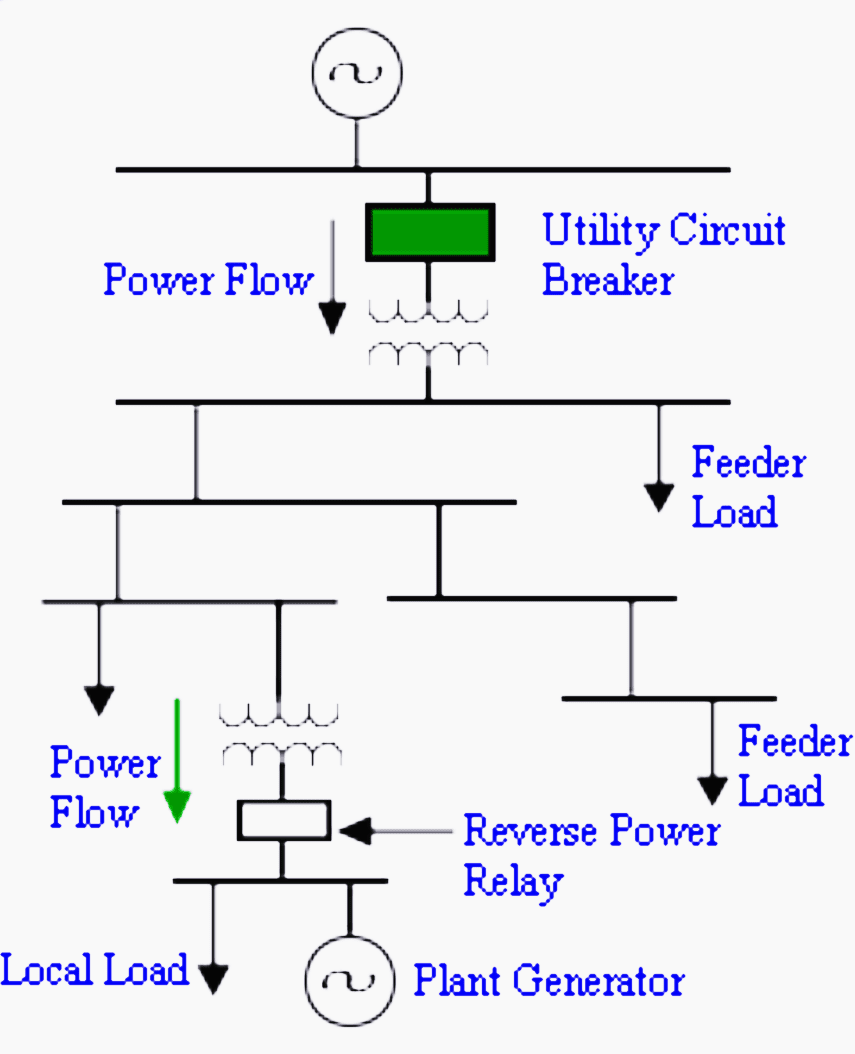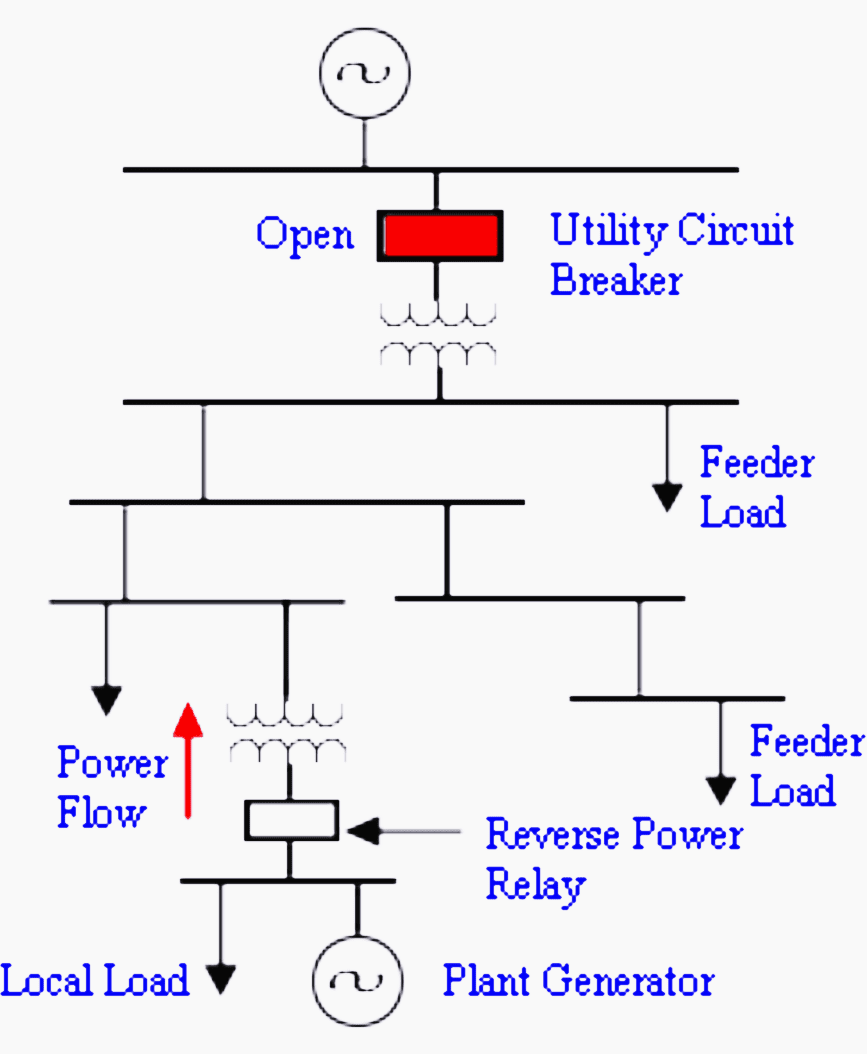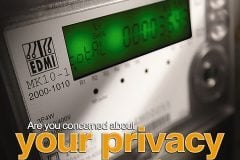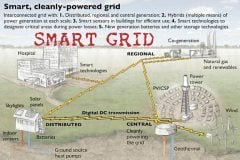System protection relays
Consider a medium voltage distribution system having local generation (e.g., captive power generation) as shown in figure 1 which is also synchronized with the grid. During grid disturbance, if plant generators are not successfully isolated from the grid, they also sink with the grid.

All this is resulting in significant loss in production and damage to process equipments.


The following relays are used to detect such disturbances, its severity and isolate the inplant system from the grid.
- Underfrequency and over frequency relays
- Rate of change of frequency relays
- Undervoltage relays
- Reverse power flow relays
- Vector shift relays
Underfrequency relay and Rate of change of frequency relay
In case of a grid failure (figure 2), captive generators tend to supply power to other consumers connected to the substation. The load-generation imbalance leads to fall in frequency.
Because of the inertia of the machines, frequency drops gradually. To speed up the islanding decision, rate of change of frequency relays are used.


Undervoltage relay
Whenever there is an uncleared fault on the grid close to the plant, the plant generators tend to feed the fault, and the voltages at the supply point drops. This can be used as a signal for isolating from the grid.
Reverse power relay
Distribution systems are radial in nature. This holds true for both utility and plant distribution systems. If there is a fault on the utility’s distribution system, it may trip a breaker thereby isolating plant from the grid.
If in the prefault state, power was being fed to the plant, then this reversal of power flow can be used to island the plant generation and load from the remaining system.
This approach is useful to detect loss of grid supply whenever the difference between load and available generation is not sufficient to obtain an appreciable rate of change of frequency but the active power continues to flow into the grid to feed the external loads.




Example
In figure 4, consider that the plant imports at all times a minimum power of 5 MW. Studies indicate that for various faults in utility side, minimum power export from the plant generator is 0.5 MW. Deduce the setting of reverse power relay.
If the plant generator is of 50 MW capacity, what is likelihood of underfrequency or rate of change of frequency relay picking up on such faults?
ANSWER: Reverse power flow relay can be set to 0.4 MW. Since minimum reverse power flow is 1% of plant capacity, it is quite likely, that utility disconnection may not be noticed by underfrequency or the rate of change of frequency relays.
Dynamical nature of the power system
Usually, system protection requires study of the system dynamics and control. To understand issues in system protection, we overview dynamical nature of the power system. Power system behaviour can be described in terms of differential and algebraic system of equations.
Figure 5 shows the various time scales involved in modelling system dynamics. The dynamics involved in switching, lightning, load rejection, etc. have a high frequency component which die down quickly. In analysis of such dynamics, differential equations associated with inductances and capacitances of transmission lines have to be modelled. Such analysis is restricted to a few cycles.
It is done by Electromagnetic Transient Program (EMTP).


At a larger time scale (order of seconds), response of the electromechanical elements is perceived. These transients are typically excited by faults which disturb the system equilibrium by upsetting the generator-load balance in the system. As a consequence of fault, electrical power output reduces instantaneously while the mechanical input does not change instantaneously.
The resulting imbalance in power (and torque) excites the electromechanical transients which are essentially slow because of the inertia of the mechanical elements (rotor etc).
Transient stability studies are required to determine the post fault system stability. In practice, out-of-step relaying, underfrequency load shedding, islanding etc are the measures used to enhance system stability and prevent blackouts.
The distinction between system protection and control (e.g. damping of power swings) is a finer one. In the today’s world of Integrated Control and Protection Systems (ICPS), this distinction does not make much sense.
ElectroMagnetic Transient Program – EMTP
Reference // Fundamentals of Power System Protection – Extract from IIT Bombay NPTEL











I think you messed up the video for EMTP. You added a video of a link between ETAP and EMTP but ETAP and EMTP are two different software (see http://www.emtp.com).
Does the relay settings/group to be changed for export and import breakers every time or the IED can manage itself.
Well come